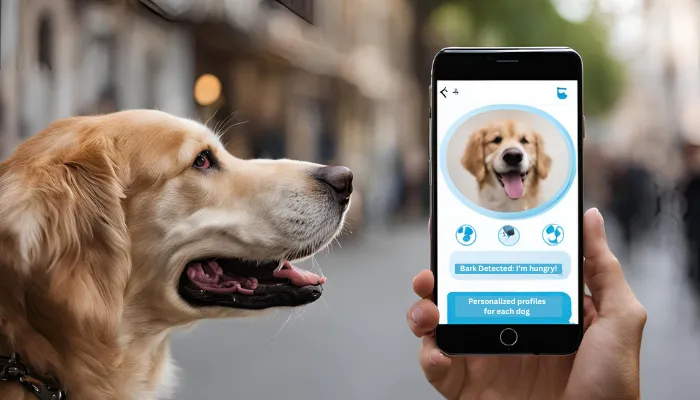How Do Dogs Say “Sorry”? This is one of the most fundamental inquiries many dog owners have when their pets show specific behavior after their misdeeds. Dogs do not have a complete understanding of guilt like we do, but they have their own ways of expressing and feeling remorse.
From the “guilty look” to the peace offerings, canines are incredibly sophisticated in their attempts to foster affection and ask for forgiveness. Can a dog translator help us understand these subtle signs of apology? In this article, we will dive into the most notable signs a dog is apologizing and how a person should react in order to promote good behavior.

How Does Your Dog Apologize?
How Do Dogs Say “Sorry”? Here are some of the most common ways dogs say sorry:
- The Guilty Look
- One of the telltale indications of ‘guilty look’ will be the eyes avoiding focus, ears lowered and tails tucked. Some people speculate that as a result of negative reinforcement. This stance does not denote guilt, however, it shows that your dog clearly understands it is wrong.
- Licking or Nuzzling
- Each time a dog wishes to express affection, they normally lick or nuzzle their owners. Likewise, after undertaking an unacceptable behavior, nuzzling could express, “I am quite sorry for my actions”.
- Bringing You a Toy or Gift
- Other dogs will attempt to placate their owner by bringing their favorite toy, or any object that’s not a toy, as an offering. This act is in some cases supposed to help them correct their behavior and earn forgiveness.
- Cowering or Rolling Over
- In the event that a dog is cowering or rolling on its back, it is demonstrating submissiveness. It is a way and behavior which depict that they accept your power over them, and that they are remorseful for whatever they did.
- Whining or Soft Barking
- Whimpering and soft barks fall in the category of vocal sounds which could reflect a feeling of guilt. These noises are often performed alongside mitigating actions.
Remember, while dogs may not fully understand the concept of guilt, their actions speak volumes about their love and desire to make amends.
Do Dogs Feel Guilt?
The question How Do Dogs Say “Sorry”? is something animal behaviorists argue about. Some studies claim that the “guilty look” observed in dogs is more likely a reaction to their owner’s body language than an indication of understanding.
On the other hand, a considerable number of dog owners profess that their pets feel deep regret for their actions. Whether those claims are true or false, the fact remains that dogs are eager to please the humans around them.
How to Respond When Your Dog Says Sorry?
How Do Dogs Say “Sorry”? When your dog shows signs of apologizing, it’s important to respond in a way that reinforces positive behavior. Here’s how you can handle the situation:
- Staying Calm Is Key:
- When a dog pees indoors, yelling at them will only make them more anxious and confused. Remain calm instead.
- Taking Like For Like:
- A simple pat or embrace ensures that your dog is at peace and makes him strive to be at his best. This enhances the relationship.
- Channel Their Focus:
- In case of mischief because of too much energy or boredom, redirect attention to a toy. This saves mischief from taking place in the first instance and keeps the dog engrossed.
- Neglecting Proofing The Problem:
- Although it’s good to appreciate the dog’s attempt at talking to you, do not give them anything to munch on or hug them to death. This could worsen the behavior you are trying to prevent.
By responding with patience and understanding, you help your dog learn and grow while strengthening your relationship.
Common Apology Behaviors in Dogs
Dogs have unique ways of expressing apology, and understanding their behaviors can help strengthen your bond.
| Behavior | What It Means | How to Respond |
|---|---|---|
| Guilty Look | Recognition of wrongdoing | Stay calm, reassure your dog |
| Licking/Nuzzling | Seeking affection and forgiveness | Offer gentle affection |
| Bringing a Toy | Peace offering | Accept the gesture, redirect energy |
| Cowering | Submission and remorse | Reassure with a calm voice |
| Whining | Expressing distress or regret | Comfort without over-rewarding |
By recognizing and responding to these signals, you can guide your dog toward positive behavior and build a trusting relationship.
Conclusion
How Do Dogs Say “Sorry”? Though dogs may not be capable of feeling guilt, some actions from their part demonstrate a willingness to make amends. From the nuzzling to the offering of toys or even guilty glances, every behavior from your dog serves as an affectionate apology.
By showing warmth and reinforcing good behavior, you will enhance your relationship with your dog and teach him how to act in a trusting loving environment.
